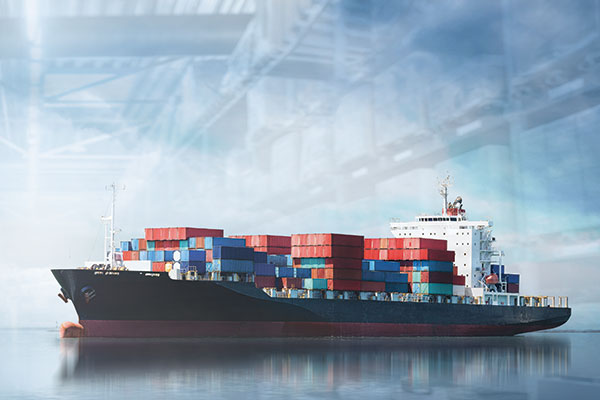Sorry, but your login has failed. Please recheck your login information and resubmit. If your subscription has expired, renew here.
March-April 2021
Last night, my wife and I shared a socially distanced bonfire with a few friends. One was a retired physician who is spearheading the vaccination effort in the small New Hampshire city where I live. New Hampshire has had its challenges getting needles into arms like everywhere else, but it seems as if we’re breaking through the log jam. For example, between week 1 and week 3, they’ve tripled the number of people they can vaccinate in a day, and they’ve expanded from five days a week to seven days a week. At least for now, there has not been a shortage of vaccines. I know there is a long way to go, but you can feel it picking up speed. Call me… Browse this issue archive.Need Help? Contact customer service 847-559-7581 More options
The ocean transportation industry is facing daunting challenges. These are creating headwinds for carriers and shippers alike.
Carriers are challenged by overcapacity, as major players move to bigger and bigger vessels; fierce price competition, often at the expense of customer service; unbalanced route structures; high fuel costs; unreliable schedules and longer wait and transport times for shippers. By some estimates, paper-based operations, the traditional way to manage ocean shipping, reduces capacity by up to 15% and represents up to 20% of the cost of physical transportation, according to the supply chain platform TradeLens.
Faced with uncertain carrier delivery times, shippers are compelled to load their warehouses with just-in-case inventory, incurring higher freight and storage costs. Moreover, a significant percentage of ocean transportation capacity is reserved for large shippers operating with year-long freight contracts. This relegates small- and medium-sized shippers to the spot market, where rates for shipping are more volatile. Sometimes, even large shippers have difficulty planning their delivery cycles in the rapidly evolving global trade environment.

This complete article is available to subscribers only.
Log in now for full access or start your PLUS+ subscription for instant access.
SC
MR
Sorry, but your login has failed. Please recheck your login information and resubmit. If your subscription has expired, renew here.
March-April 2021
Last night, my wife and I shared a socially distanced bonfire with a few friends. One was a retired physician who is spearheading the vaccination effort in the small New Hampshire city where I live. New Hampshire has… Browse this issue archive. Access your online digital edition. Download a PDF file of the March-April 2021 issue.The ocean transportation industry is facing daunting challenges. These are creating headwinds for carriers and shippers alike.
Carriers are challenged by overcapacity, as major players move to bigger and bigger vessels; fierce price competition, often at the expense of customer service; unbalanced route structures; high fuel costs; unreliable schedules and longer wait and transport times for shippers. By some estimates, paper-based operations, the traditional way to manage ocean shipping, reduces capacity by up to 15% and represents up to 20% of the cost of physical transportation, according to the supply chain platform TradeLens.
Faced with uncertain carrier delivery times, shippers are compelled to load their warehouses with just-in-case inventory, incurring higher freight and storage costs. Moreover, a significant percentage of ocean transportation capacity is reserved for large shippers operating with year-long freight contracts. This relegates small- and medium-sized shippers to the spot market, where rates for shipping are more volatile. Sometimes, even large shippers have difficulty planning their delivery cycles in the rapidly evolving global trade environment.
SC
MR


Latest Supply Chain News
- Manufacturing again contracts in October, reports ISM
- 5 common communication issues
- Three frameworks for creative problem-solving in supply chain
- Mitigating geopolitical uncertainty: 4 essential tactics for industrial CSCOs
- Supply chain strategy for medical devices: A Q&A with industry expert Sanjay Gupta
- More News
Latest Podcast

 Explore
Explore
Software & Technology News
- How technological innovation is paving the way for a carbon-free future in logistics and supply chains
- Körber Supply Chain Software’s Craig Moore says MercuryGate acquisition is about the customer
- Robotic use grows by 10%
- Harnessing Edge Computing and AI Vision Systems for Real-Time Logistics Insights
- The art of winning at supply chain technology: Lessons from managing tech for the largest private trucking fleet in the U.S.
- The 3 types of cyberattacks affecting global supply chains
- More Software & Technology
Latest Software & Technology Resources

Subscribe

Supply Chain Management Review delivers the best industry content.

Editors’ Picks





